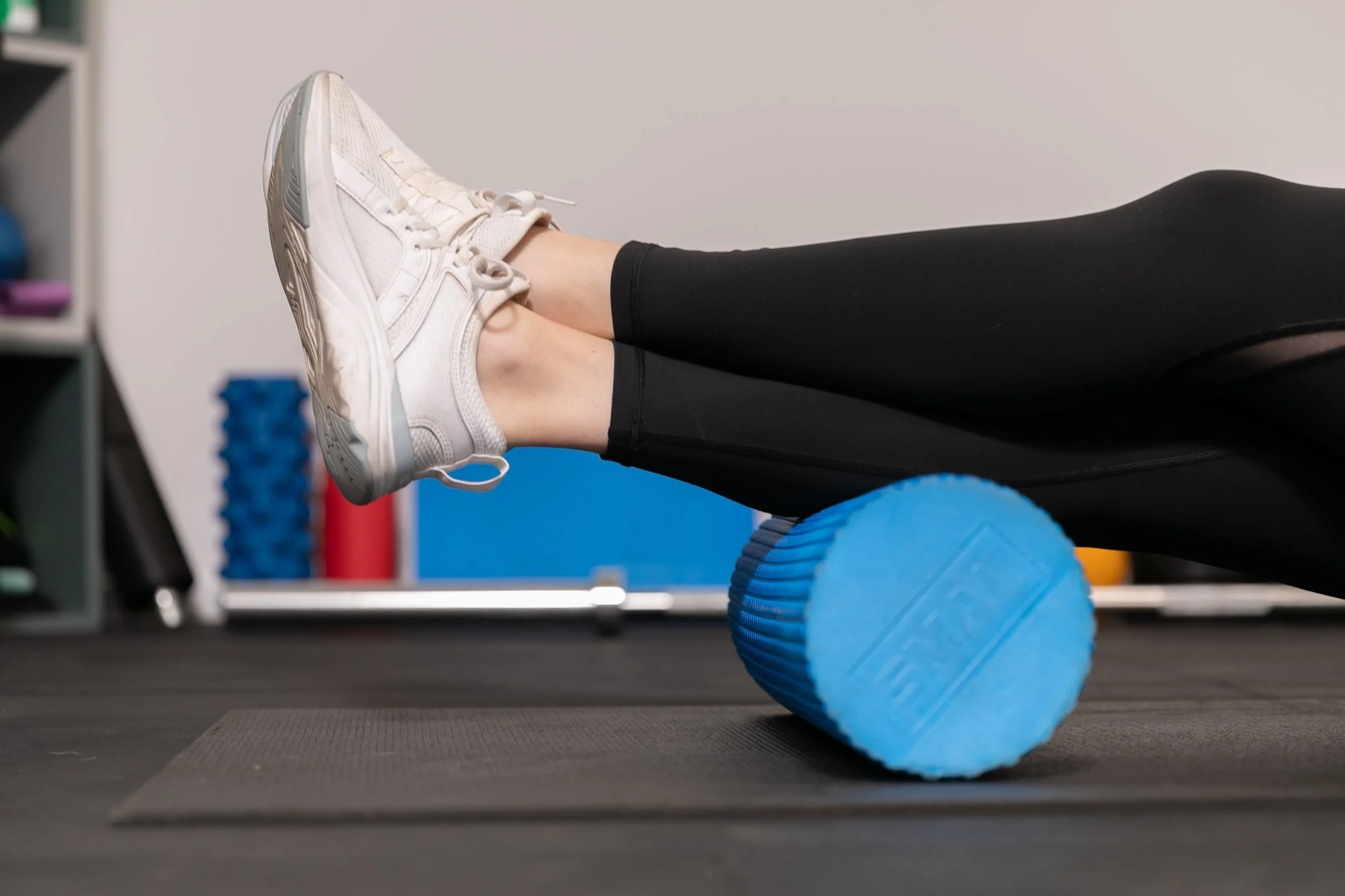🌀 What Foam Rolling Really Does: The Science Behind Muscle Relaxation
Foam rolling is everywhere—from gym floors to clinic rehab rooms—but the science behind it is often misunderstood. Let’s clear up the biggest myth: foam rolling does not break down fascial adhesions or muscle “knots.” What it does is far more interesting—and neurologically driven.
❌ Myth: Foam Rolling Breaks Down Fascial Adhesions
Fascia is incredibly strong. Studies show it takes over 500 pounds of force to deform fascial tissue by even 1%—far beyond what a foam roller can deliver.
📚 Citation: Schleip, R., & Müller, D. G. (2013). Training principles for fascial connective tissues: Scientific foundation and suggested practical applications. Journal of Bodywork and Movement Therapies, 17(1), 103–115. https://doi.org/10.1016/j.jbmt.2012.06.007
✅ Reality: Foam Rolling Modulates the Nervous System
The “release” you feel is a neurological response, not a mechanical one. Pressure from foam rolling stimulates mechanoreceptors like Ruffini endings and Pacinian corpuscles, which:
Reduce muscle tone via spinal reflexes
Increase stretch tolerance
Shift the nervous system toward parasympathetic dominance
📚 Citation: Kerautret, Y., Guillot, A., Daligault, S., & Di Rienzo, F. (2021). Foam rolling elicits neuronal relaxation patterns distinct from manual massage: A randomized controlled trial. Brain Sciences, 11(6), 818. https://doi.org/10.3390/brainsci11060818
🧠 Sensory Recalibration and Pain Modulation
Foam rolling may reduce pain by recalibrating how your brain interprets sensory input—via mechanisms like diffuse noxious inhibitory control (DNIC) and novel proprioception.
📚 Citation: Nakamura, M., Konrad, A., Kiyono, R., Sato, S., Yahata, K., Yoshida, R., Yasaka, K., Murakami, Y., Sanuki, F., & Wilke, J. (2021). Local and non-local effects of foam rolling on passive soft tissue properties and spinal excitability. Frontiers in Physiology, 12, 702042. https://doi.org/10.3389/fphys.2021.702042
📈 Range of Motion Without Strength Loss
Foam rolling improves flexibility without compromising strength—unlike prolonged static stretching.
📚 Citation: Konrad, A., Tilp, M., & Nakamura, M. (2021). A comparison of the effects of foam rolling and stretching on physical performance: A systematic review and meta-analysis. Frontiers in Physiology, 12, 720531. https://doi.org/10.3389/fphys.2021.720531
🔍 Summary: What Foam Rolling Really Does
✅ Stimulates mechanoreceptors → reduces muscle tone ✅ Enhances proprioception → improves movement awareness ✅ Increases blood flow and hydration → supports recovery ✅ Modulates pain perception → improves comfort and ROM
❌ Does not break down scar tissue ❌ Does not release “knots” ❌ Does not remodel fascia
🕒 When to Use Foam Rolling
Foam rolling is most effective when used strategically—not randomly. Here’s how to time it for maximum benefit:
🧍 Everyday Use
Morning: Light rolling to reduce overnight stiffness and improve movement readiness
Evening: Gentle rolling to downregulate the nervous system and promote relaxation before sleep
Desk-bound days: Midday rolling to counteract postural tension in hips, thoracic spine, and neck
🏋️ Pre-Gym or Competition
Use foam rolling before training to:
Increase blood flow and tissue temperature
Improve joint range of motion
Prime the nervous system for movement
Focus on short bouts (30–60 seconds per area) with moderate pressure
Pair with dynamic mobility drills for best results
🧘 Post-Gym or Competition
Use foam rolling after training to:
Reduce muscle tone and sympathetic nervous system activity
Support recovery and fluid exchange
Decrease perceived soreness and tension
Use slower, longer passes (60–90 seconds per area) with deeper pressure
Combine with breathwork or stretching for enhanced parasympathetic activation


